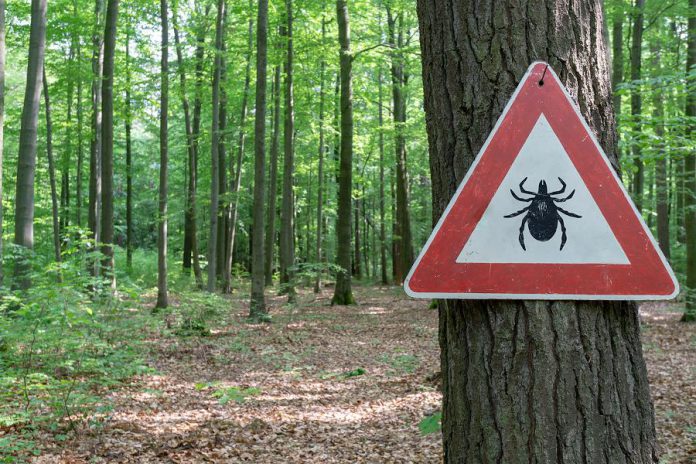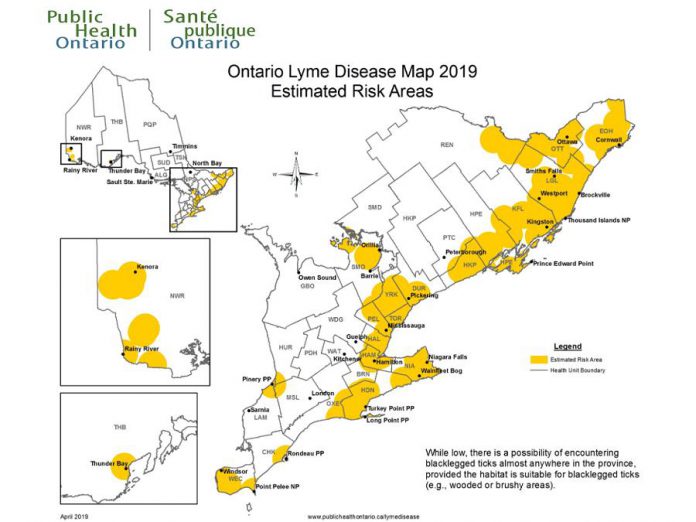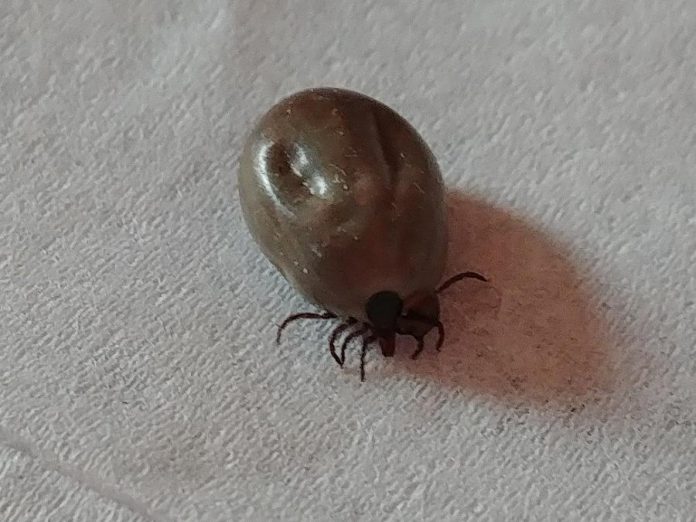
Every summer, we hear about the potential dangers of being bitten by a tick and developing Lyme disease — a potentially serious inflammatory infection.
But not every one of the 40 species of ticks in Canada carries Lyme disease so, if you find a tick, the first step is to identify what species it is.
There’s where a new website comes in. At www.etick.ca, you can submit a photo of any tick you find and get confirmation if it belongs to the species that carry Lyme bacteria. The website also includes real-time mapping of tick submissions, and a free mobile app will be launching in the fall.
“This website makes it easy for residents to determine if they’ve found a blacklegged tick,” says public health inspector Wanda Tonus of Peterborough Public Health.
“Then they can then submit the insect to Peterborough Public Health for testing to see if it’s infected with Lyme disease.”

In Ontario, the blacklegged tick (Ixodes scapularis, also known as the deer tick) is the only species of tick known to carry Lyme disease. If you’re bitten by an infected blacklegged tick, you may develop symptoms including a rash (often shaped like a bull’s eye), fever, chills, headache, stiff neck, muscle aches and joint pains, unusual fatigue, and more.
Lyme disease is named after the town of Lyme in Connecticut, where the first case of the disease was diagnosed in 1975. Until about 10 years ago, most Lyme disease infections were caused by ticks in the United States. However, because of climate change, blacklegged ticks have spread to new areas of Ontario.
Wooded or brushy areas are the preferred habitat of ticks. In the Kawarthas, the highest-risk areas for infected ticks are mainly to the southeast of Peterborough.

The number of confirmed and probable cases of Lyme disease in Ontario increases every year. According to Public Health Ontario, there were 1,003 cases in 2017 — twice as many as in 2016. Of these cases, 31 people required hospitalization.
In the Peterborough area, Peterborough Public Health received 195 tick submissions in 2018, with 95 confirmed as the blacklegged species. Of these 95, seven tested positive for Lyme disease; however, only one of these positive ticks was acquired locally.
The eTick website at www.etick.ca was originally developed in Quebec by Bishop’s University, so it’s available in both English and French. After you upload your tick photo to the website, you’ll find out within 48 hours where it’s a blacklegged tick.

If you find out it’s a blacklegged tick, Peterborough Public Health encourages you to submit it for testing as soon as possible. Place the tick in a sealed container or ziploc bag and bring it to Client Services on the third floor of 185 King Street in downtown Peterborough between 8:30 a.m. and 4:30 p.m. Monday to Friday.
Of course, the best way to avoid the possibility of Lyme disease it to prevent tick bites in the first place. If you are spending time outdoors — especially in areas that are forested or have tall grasses, weeds, or many shrubs — you should take the following precautions:
- Reduce your exposed skin by wearing long-sleeved shirts, long pants, and socks. Tuck your shirt into your pants and tuck your pants into your socks.
- Wear light-coloured clothing so you can better see if a tick has latched onto your clothing.
- Apply an insect repellent containing DEET to your clothing and exposed skin to deter ticks.
- Keep to the middle of the trail when hiking to avoid contact with tall grasses and bushes containing ticks.
- Check your clothing and entire body for ticks when you come back from the outdoors, paying special attention to hidden areas like the groin, armpits, the scalp, and the back of the knee. Have someone check you or use a mirror.
- Have a shower after returning from the outdoors as soon as you can, to wash off any ticks that you may have missed.
- Put your outdoor clothing into your dryer on high heat for an hour (don’t wash it first). Ticks thrive in wet environments but will not survive the heat of the dryer.
- Check your pets for ticks. Pets can also pick ticks up from outdoor areas and bring them into your home, where they could bite you.
Note that Lyme disease is not a contagious disease: you can only get it through the bite of an infected tick. So it can’t be spread from animal to human (or vice versa) or animal to animal.


























